Ever notice that when the seasons change so do the pests? So, did we! A common question we get is, “Why do you need to service my house quarterly instead of once a year.” There is a variety of different pests and each pest is out at different times of the year, are in different locations and need a different type of treatment. If you live in the Overland Park area the five most common pests you will see in the winter are rodents, bed bugs, roaches, spiders, and silverfish. Below is some information about these pests that are likely in your home and yard if you aren’t treating it regularly.
Rodents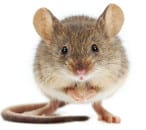
Rodents are the most common pest you will see in the winter. Where they are mammals they need a warm place to survive. Most will enter your house towards the end of fall as the temperature starts to decrease and make themselves at home for the winter months. As we have mentioned before, the best time of pest extermination is pest prevention and sealing your house in the from pests in the fall is your most protective measure against these pests.
The most common of these rodents are mice. Mice do not have very good vision but have a keen sense of hearing, smell, and touch. They are excellent climbers and can scale almost any vertical wall that has texture. Mice are extremely hardy and can survive in storage facilities at 14 degrees F. They have excellent balance and can run across pipes, ropes, and wires. Because their bodies contain cartilage and not bones they can squeeze into openings the size of a dime.Mice are very inquisitive and will explore anything new that is introduced into their territory. Mice are nibblers and only consume small amounts of food at one time. They will feed numerous times throughout the day. Most of their water needs are taken care from the moisture found in most of their food. Mice prefer seeds but can eat many different types of food.
Nesting areas are preferably dark and secluded areas where there is an abundance of nesting material. They will make nests out of fabric threads, paper, insulation, and other similar materials. Mice are most active at night.
Bed Bugs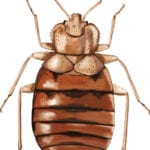 Bed bugs can be found all year round, but due to other bugs hibernating for the winter, they seem to be more common at this time. Humans are the preferred host of the beg bug, but it will feed on other hosts if necessary. Bed bugs typically feed at night while the host is sleeping. Bed bugs will hide in cracks and crevices during daylight hours. Typical hiding places are folds and seams of mattresses, bed frames, box springs, and upholstery of chairs and couches.
Cockroaches
Cockroaches can be detected by the damage or fecal matter they leave on or near their harborage. Cockroaches will eat just about anything including starches, sweets, meats, grease and even human excrement. Cockroaches generally like to take harborage in unsanitary areas such as sewers, garbage disposals, kitchen areas, and bathroom areas. They like areas with higher warmth, moisture, and humidity. Like most pests looking for warmth and protection from the winter months, your home is a perfect nesting place for Cockroaches. Cockroaches can transmit germs and diseases like salmonella, E-coli, and dysentery. Knowing this, most customers cannot tolerate any type or number of cockroaches in their homes.
Bed bugs can be found all year round, but due to other bugs hibernating for the winter, they seem to be more common at this time. Humans are the preferred host of the beg bug, but it will feed on other hosts if necessary. Bed bugs typically feed at night while the host is sleeping. Bed bugs will hide in cracks and crevices during daylight hours. Typical hiding places are folds and seams of mattresses, bed frames, box springs, and upholstery of chairs and couches.
Cockroaches
Cockroaches can be detected by the damage or fecal matter they leave on or near their harborage. Cockroaches will eat just about anything including starches, sweets, meats, grease and even human excrement. Cockroaches generally like to take harborage in unsanitary areas such as sewers, garbage disposals, kitchen areas, and bathroom areas. They like areas with higher warmth, moisture, and humidity. Like most pests looking for warmth and protection from the winter months, your home is a perfect nesting place for Cockroaches. Cockroaches can transmit germs and diseases like salmonella, E-coli, and dysentery. Knowing this, most customers cannot tolerate any type or number of cockroaches in their homes.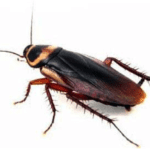 Cockroaches will usually be found in cracks and crevices that protect them and provide warmth and humidity. Their bodies are flat and oval, which enables them to squeeze into all types of cracks and crevices. Specialized pads on the cockroach’s legs and feet allow them to be able to climb almost any vertical wall texture or even across ceilings.
Spiders
Cockroaches will usually be found in cracks and crevices that protect them and provide warmth and humidity. Their bodies are flat and oval, which enables them to squeeze into all types of cracks and crevices. Specialized pads on the cockroach’s legs and feet allow them to be able to climb almost any vertical wall texture or even across ceilings.
Spiders
Spiders are probably the most common pest home owners will encounter. There are over 3000 species in the United States alone. Wherever there is food available, spiders are likely to be found. Like most pests, they prefer dark and secluded areas – especially when they are getting ready to lay their eggs. The winter is when spiders typically lay their egg sacks which can contain hundreds of baby spiders. One of the most common places we find spiders in the winter is the attic, it is warm, dark, and secluded a perfect place for laying eggs. Getting your attic treated for spiders is one of the best ways to prevent spiders in the spring.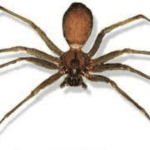
In the United States, only a few are considered poisonous and dangerous to man, the black widow, brown recluse, hobo spider and yellow sac spider. Many spiders you see in Overland Park and the Greater Kansas City area aren’t poisonous, but you should look out for the brown recluse.
The brown recluse will be found infesting cedar shake roofs, attics, cluttered closet areas, behind toilets, in higher rooms not occupied, or other areas of the home where they won’t be disturbed. Normally the brown recluse will bite only when crushed as a defense mechanism. It is a good idea to shake clothes or bang together shoes, to make sure the spider is not hiding within the clothing. Another area where bites commonly occur is in bedding. Bedspreads and bed skirts should not touch the ground because the spider can use it to crawl up inside the bed covers. Silverfish The appearance of silverfish often makes people think they are dangerous, however, although they are not venomous like the brown recluse like other pests they can cause a lot of damage. Silverfish. Silverfish will eat anything from wallpaper, clothing, books, cereals, and even your home’s insulation. Silverfish are very hard to get rid of and we recommend you call us especially if you have an infestation of silverfish. This infestation is not only hard to get rid of, are a great food source for the brown recluse, which as we have mentioned is very dangerous.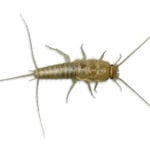
Even if you haven’t seen any of these pests, if you aren’t doing anything to prevent them you probably have them and need to get rid of the pests before they become an infestation in the Spring. Please let us help you by filling out the form or us a call at 816.298.8566!


















